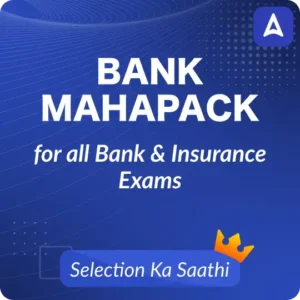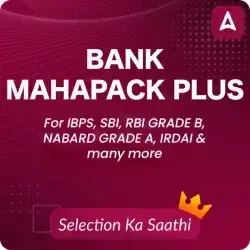The State Bank of India (SBI) has officially released the SBI CBO Interview Call Letter 2025, and shortlisted candidates are now gearing up for the crucial interview stage. After clearing the Online Objective and Descriptive Tests, this is the next and final step toward becoming a Circle Based Officer (CBO). The interview round is designed to assess not just your knowledge, but also your composure, clarity, and readiness to handle the responsibilities that come with a CBO role.
Marks from both the Objective and Descriptive Tests will be combined with the interview scores to prepare the final merit list. This list is based on the normalised marks of the Online Written Test and Interview, with respective weightages of 75% and 25%. The online test scores (out of 170) are converted to a score out of 75, while interview scores (out of 50) are converted to a score out of 25. The final merit list, which is categorised by circle and category, is compiled by adding these converted marks for a total of 100.
SBI CBO Interview Questions: Overview
Here’s a quick overview of the SBI CBO interview process and its key details:
| SBI CBO Interview Questions: Overview | |
| Particulars | Details |
| Recruiting Body |
State Bank of India (SBI)
|
| Post Name |
Circle Based Officer (CBO)
|
| Exam Year | 2025 |
| SBI CBO Interview Call Letter | Released on 20 October 2025 |
| Interview Dates |
1 November – 11 November 2025
|
| Selection Stage |
Online Written Test (Objective + Descriptive) and Interview
|
| Online Written Test Marks |
170 Marks (Objective + Descriptive)
|
| Interview Marks | 50 Marks |
| Weightage for Final Merit |
Online Test – 75%; Interview – 25%
|
| Mode of Interview |
Face-to-Face (Offline)
|
| Interview Type |
Personality-based and Knowledge-based Interaction
|
| Assessment Areas |
Banking Knowledge, Communication Skills, Customer Handling, Leadership, and Local Awareness
|
| Final Merit Preparation |
Based on normalised marks out of 100 (Circle-wise and Category-wise)
|
| Final Selection Criteria |
Combined performance in Online Written Test and Interview
|
SBI CBO Interview Questions 2025
The SBI CBO interview is conducted face-to-face, where your ability to think, communicate, and present yourself under pressure is evaluated. You can’t go unprepared for this round, as it assesses your communication skills, banking knowledge, decision-making, confidence, and suitability for the role. The panel expects clarity of thought, leadership qualities, and awareness of current banking trends.
1. Tell me about yourself
This is the first and most expected question. It helps the panel judge how clearly and confidently you can summarise your professional journey.
Answer:
Introduce yourself with your name, education, and current role. Talk about your professional experience and measurable achievements. Conclude by connecting your background with the SBI CBO role and how it fits your long-term goals.
Example Answer:
“My name is Priya Verma. I completed my MBA in Banking and Finance from Delhi University and have been working as an Assistant Manager in a nationalised bank for the past 5 years. My work mainly involves branch operations, loan processing, and cross-selling. I successfully implemented a digital onboarding drive that improved our CASA base by 12% in six months. I’m looking forward to joining SBI as a Circle-Based Officer, where I can use my operational experience and leadership skills to serve my home region more effectively.”
How to Frame Your Own Answer:
- Structure it as: Name → Education → Experience → Achievements → Why SBI CBO.
- Include one measurable performance metric (growth %, targets achieved, or initiative led).
- Avoid personal details; keep the tone formal yet natural, within 70-90 seconds if spoken.
2. Why do you want to join SBI as a Circle-Based Officer?
This question evaluates your motivation, knowledge about SBI, and understanding of the CBO role.
Answer:
Explain what attracts you to SBI – its brand value, stability, learning environment, and customer-centric culture. Then connect how your skills and local experience make you an ideal fit for the Circle-Based model.
Example Answer:
“SBI is India’s largest public sector bank with unmatched credibility and growth potential. The CBO position allows me to apply my branch management and customer relationship skills while serving my home circle. The role offers a perfect balance between responsibility, regional familiarity, and professional growth – something I’ve been preparing for throughout my career.”
How to Frame Your Own Answer:
- Emphasise SBI’s reputation + CBO’s regional focus + your fit.
- Mention one specific aspect you value (like leadership, inclusivity, or technology adoption).
- Avoid generic lines like “It’s a prestigious job” – back it with logic and alignment to your profile.
3. What are your key strengths and weaknesses?
This tests your self-awareness and honesty – how well you evaluate yourself.
Answer:
Discuss 2-3 professional strengths relevant to the CBO role – like people management, branch operations, or compliance. For weakness, choose something genuine but not critical, and show how you’re improving it.
Example Answer:
“My key strengths include adaptability and a customer-first mindset. I’ve often handled high-pressure situations like audit reviews or system downtimes efficiently. Earlier, I struggled with delegating tasks, but I’ve been working on it by trusting my team and tracking tasks systematically.”
How to Frame Your Own Answer:
- Strengths → Evidence → Weakness → Improvement Step.
- Keep your weakness non-critical (avoid “I get angry” or “I’m impatient”).
- End on a positive note, showing growth and maturity.
4. How do you handle customer complaints in a busy branch environment?
This question checks your problem-solving, patience, and communication.
Answer:
Show that you listen actively, empathize with the customer, and take ownership of resolving issues. The panel expects practical steps, not theory.
Example Answer:
“I always listen first without interruption to understand the customer’s concern. I then clarify the issue, reassure them, and take immediate action – whether it’s transaction correction or escalation. Once resolved, I follow up personally to ensure satisfaction. This approach helped me convert a dissatisfied customer into a loyal client at my branch.”
How to Frame Your Own Answer:
- Use the L-E-A-F method: Listen → Empathise → Act → Follow-up.
- Share one real instance that ended positively.
- Never blame others; focus on resolution and ownership.
5. How do you stay updated with the latest banking trends and RBI guidelines?
This tests your awareness and commitment to professional growth.
Answer:
Explain your learning habits – reading RBI circulars, internal training modules, or following financial portals. This shows you’re proactive about compliance and knowledge.
Example Answer:
“I make it a point to read RBI circulars every week and follow updates on the SBI intranet and financial platforms like ET BFSI. I also attend our internal compliance and audit webinars regularly. This helps me stay informed and implement policy changes smoothly at the branch.”
How to Frame Your Own Answer:
- Mention specific sources (RBI circulars, SBI internal portal, financial dailies).
- Add one example of a recent change you adapted to (like new KYC norms).
- Keep tone confident – it shows curiosity and discipline.
6. How would you motivate your team during a low-performance quarter?
This question checks your leadership and emotional intelligence.
Answer:
Talk about identifying causes, communicating transparently, and inspiring through teamwork and recognition rather than pressure.
Example Answer:
“During a slow quarter, I start with a one-on-one discussion to understand challenges – personal or operational. Then I set short achievable goals, celebrate small wins, and realign targets collectively. Last year, this approach helped my branch recover 85% of its loan disbursement target within two months.”
How to Frame Your Own Answer:
- Explain, diagnose → plan → motivate → monitor.
- Add a real achievement to prove you’ve done it.
- Avoid textbook phrases like “I motivate by positive attitude” – use specific methods.
7. What is the difference between CASA and Term Deposits?
A basic operational question – tests clarity of banking fundamentals.
Answer:
Explain CASA and term deposits simply, focusing on cost, liquidity, and importance for the bank.
Example Answer:
“CASA stands for Current Account and Savings Account. These are low-cost deposits for banks since they carry minimal interest obligations. Term Deposits, on the other hand, are fixed for a specific period with higher interest rates. While term deposits ensure stable funds, CASA growth directly improves a bank’s profitability.”
How to Frame Your Own Answer:
- Define both terms clearly.
- End with their importance to the branch business.
- Avoid memorised textbook tone – speak as if explaining to a new employee.
8. How do you ensure compliance and prevent fraud at your branch?
This evaluates integrity, process awareness, and attention to detail.
Answer:
Highlight preventive steps like verifying documents, dual authorisation, monitoring suspicious transactions, and staff training.
Example Answer:
“I ensure every process follows the maker-checker principle. We conduct regular audits and daily exception reviews. In case of suspicious transactions, I immediately report to the AML officer. I also educate customers and staff about phishing and cyber risks, which has helped our branch maintain a clean audit record.”
How to Frame Your Own Answer:
- Mention -3 levels: process → people → technology.
- Include 1 preventive measure you personally implemented.
- Keep focus on vigilance, not blame.
9. What do you understand by Priority Sector Lending (PSL)?
A question testing your conceptual clarity about RBI mandates.
Answer:
Explain what PSL is, its purpose, and SBI’s involvement.
Example Answer:
“Priority Sector Lending refers to RBI’s directive requiring banks to lend a fixed portion of their credit to sectors like agriculture, MSMEs, housing, and education. SBI has consistently exceeded PSL targets through dedicated schemes like SBI SME Loans and Kisan Credit Cards.”
How to Frame Your Own Answer:
- Define PSL → objective → SBI’s compliance.
- Mention one target sector with an example.
- Avoid jargon; use a simple, confident tone.
10. Tell us about a time you handled a difficult customer or branch situation.
This checks your temperament and practical problem-solving.
Answer:
Use the STAR method – Situation, Task, Action, Result. Show calmness, decision-making, and resolution.
Example Answer:
“Once, a customer was upset due to a delay in NEFT transfer. I listened patiently, checked logs, and found it was stuck at the clearing stage. I coordinated with the back office and ensured completion within an hour. Later, the customer appreciated the transparency and continued banking with us.”
How to Frame Your Own Answer:
- Follow STAR: Situation → Task → Action → Result.
- Keep it real, not hypothetical.
- Highlight customer satisfaction or retention as the outcome.
11. How do you balance customer satisfaction with compliance requirements?
A common managerial question – the panel wants to see how you maintain service quality without compromising rules.
Answer:
Demonstrate that you understand the importance of compliance and satisfaction working in tandem. You follow processes but also know how to explain them empathetically to customers.
Example Answer:
“I believe compliance and customer satisfaction are not opposites – they complement each other. When customers understand that certain rules protect their interests, they value our honesty. I always explain the regulatory reason behind KYC or transaction limits in simple terms, which reduces conflict and builds trust.”
How to Frame Your Own Answer:
- Emphasise transparency + education + empathy.
- Use words like “customer trust” and “bank reputation.”
- Avoid saying “I just follow rules” – show communication and balance.
12. What do you know about SBI’s digital initiatives?
Test your awareness of SBI’s modern banking transformation – a hot question for CBO interviews.
Answer:
Mention digital products, platforms, and customer-centric innovations by SBI.
Example Answer:
“SBI has taken major steps in digital banking through platforms like YONO, SBI Quick, and SBI Buddy. The YONO app in particular integrates banking, investment, and lifestyle services on one platform. Initiatives like YONO Business, digital lending, and e-KYC onboarding have enhanced both convenience and operational efficiency.”
How to Frame Your Own Answer:
- Mention 2-3 initiatives (YONO, SBI Saral, e-KYC, Chatbot SIA).
- End with their impact – “improves customer reach, reduces cost, and enhances transparency.”
- Stay factual and brief – around 70-80 seconds if spoken.
13. What steps would you take to increase CASA deposits in your branch?
A very practical and expected operational question.
Answer:
Explain actionable steps like target-based outreach, cross-selling, and local engagement strategies.
Example Answer:
“To grow CASA, I’d focus on relationship building with local traders, professionals, and government offices. I’d also ensure every loan or term deposit customer maintains a linked account. Organizing financial literacy camps and promoting digital savings options like YONO accounts also helps increase low-cost deposits sustainably.”
How to Frame Your Own Answer:
- Mention 3-4 practical actions (relationship drive, digital accounts, salary tie-ups).
- Include one community or digital initiative.
- Avoid generic “I’ll work hard” lines – show planning and branch insight.
14. How do you handle pressure or multiple deadlines at work?
The panel checks your emotional stability and task management.
Answer:
Demonstrate your ability to prioritise, delegate, and maintain calm without letting performance drop.
Example Answer:
“In banking, pressure is constant – from audits to targets. I prioritise tasks based on urgency and impact, delegate routine work effectively, and use checklists for daily tracking. During quarterly closing, I divide responsibilities clearly, which helps the team complete reports on time without errors.”
How to Frame Your Own Answer:
- Use Prioritise → Organise → Execute → Review framework.
- Show team coordination, not solo effort.
- Keep tone calm – this is about maturity, not heroism.
15. What is your understanding of the role of a Circle-Based Officer (CBO)?
This question directly tests whether you’ve read and understood the job profile.
Answer:
Explain the core role: regional operations, leadership, compliance, and customer relationship management – with emphasis on Circle-level responsibility.
Example Answer:
“A Circle-Based Officer is a mid-level managerial position focused on branch operations, business growth, and compliance within an assigned circle. The role demands leadership, customer service, and regional knowledge. Since postings are within the home circle, it helps maintain stronger local connections and ensures continuity in business.”
How to Frame Your Own Answer:
- Define CBO → Responsibilities → Why regional focus matters.
- Mention “leadership” and “circle continuity.”
- Avoid vague terms like “officer role” – show you understand the operational depth.
16. How would you deal with a subordinate who consistently underperforms?
This checks your leadership, fairness, and conflict management.
Answer:
Show a balanced approach – counselling, coaching, and accountability.
Example Answer:
“I’d first understand the reason behind the underperformance – whether it’s lack of skill, motivation, or external pressure. Then, I’d set clear goals, provide support or training if needed, and monitor progress regularly. If there’s no improvement despite repeated guidance, I’d take it up through proper HR and appraisal channels.”
How to Frame Your Own Answer:
- Emphasise empathy first, discipline later.
- Mention “one-on-one feedback” or “performance tracking.”
- Avoid harsh tones like “I’d warn or transfer them” – show leadership maturity.
17. What are Non-Performing Assets (NPAs), and how can they be controlled?
A technical and analytical question that appears in almost every banking interview.
Answer:
Define NPA and show understanding of preventive and recovery measures.
Example Answer:
“An asset or loan becomes Non-Performing when interest or principal remains overdue for more than 90 days. NPAs can be controlled by thorough credit appraisal, regular follow-up, early warning systems, and timely restructuring of stressed assets. Awareness drives and repayment counselling for borrowers also play a big role.”
How to Frame Your Own Answer:
- Use a definition → prevention → recovery format.
- Include the 90-day rule to show conceptual clarity.
- Mention one practical prevention step, like regular monitoring or KYC checks.
18. What motivates you to work in the banking sector?
This is a personality and attitude-based question – your “why” behind choosing this field.
Answer:
Link your motivation to stability, service, and growth – not just job security.
Example Answer:
“Banking gives me a balance between customer interaction, community impact, and analytical decision-making. Every day brings new challenges – whether it’s helping a small business grow or managing digital operations. That combination of service and learning keeps me motivated to perform better.”
How to Frame Your Own Answer:
- Connect to purpose, learning, and responsibility.
- Avoid “I like finance” – make it people-oriented- and growth-oriented.
- End positively, with an emotional yet grounded tone.
19. What would you do if a customer offers you a small gift as gratitude?
A tricky integrity question – the panel checks your ethical sensitivity.
Answer:
Show integrity and professionalism. Make it clear that you appreciate the gesture but can’t accept it personally.
Example Answer:
“I’d politely thank the customer for their gesture but explain that accepting personal gifts is against the bank’s policy. I’d suggest they share their feedback through the official channel instead. Maintaining integrity and transparency is more important than any token of appreciation.”
How to Frame Your Own Answer:
- Emphasise policy adherence + polite communication.
- Keep tone respectful, not arrogant.
- End with “I believe trust is built through honesty, not favours.”
20. Where do you see yourself in the next five years within SBI?
This question checks your ambition and long-term vision within the organisation.
Answer:
Show commitment to growth within SBI – as a performer, leader, and loyal officer.
Example Answer:
“In the next five years, I aim to take up greater responsibilities – ideally leading a key branch or cluster within my circle. I want to contribute to the digital and business expansion initiatives of SBI while strengthening customer trust. My long-term goal is to grow as a dependable, result-oriented officer within the organisation.”
How to Frame Your Own Answer:
- Show loyalty, a growth mindset, and leadership aspiration.
- Avoid saying “I want to switch departments or move abroad.”
- Keep the answer rooted in SBI’s ecosystem and long-term contribution.


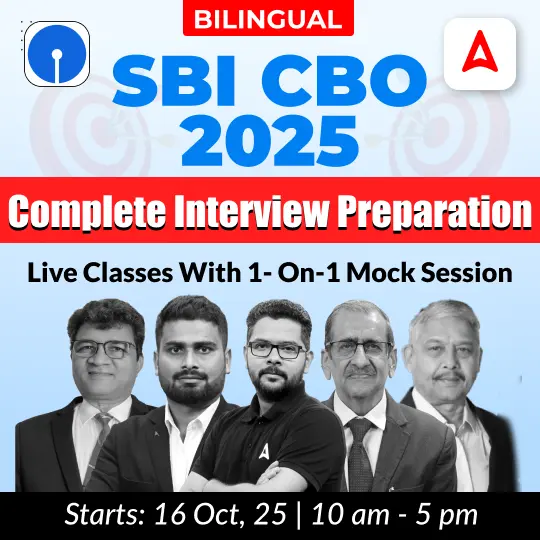

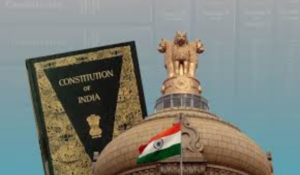 Government Appoints New Executive Direct...
Government Appoints New Executive Direct...
 Bank of America India Gets New CEO, RBI ...
Bank of America India Gets New CEO, RBI ...
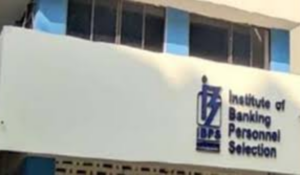 Most important topic for IBPS RRB Clerk ...
Most important topic for IBPS RRB Clerk ...
